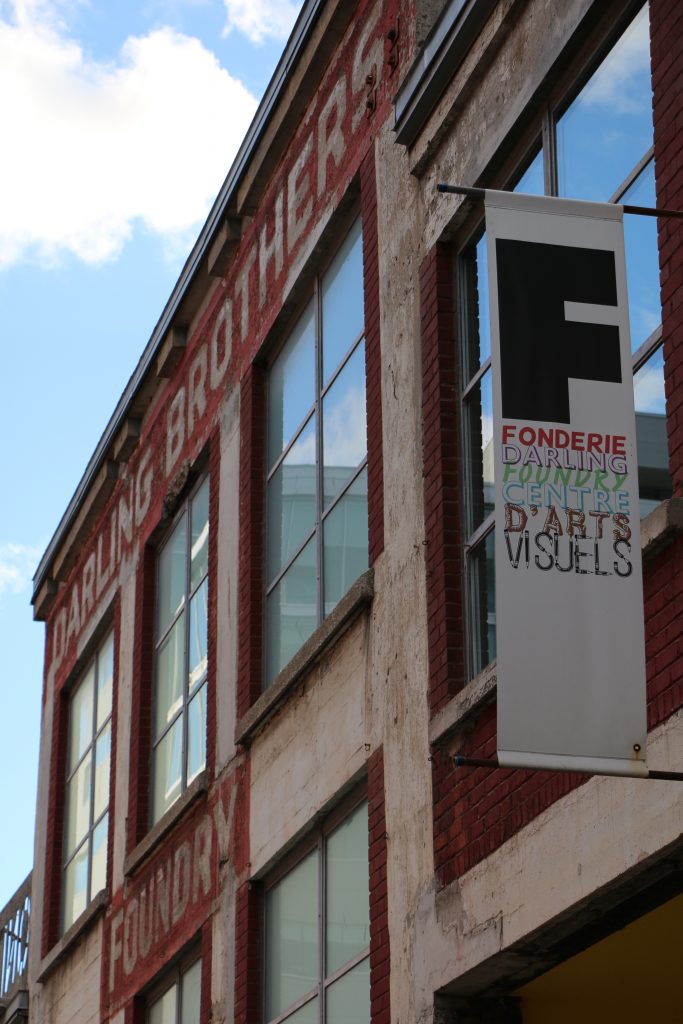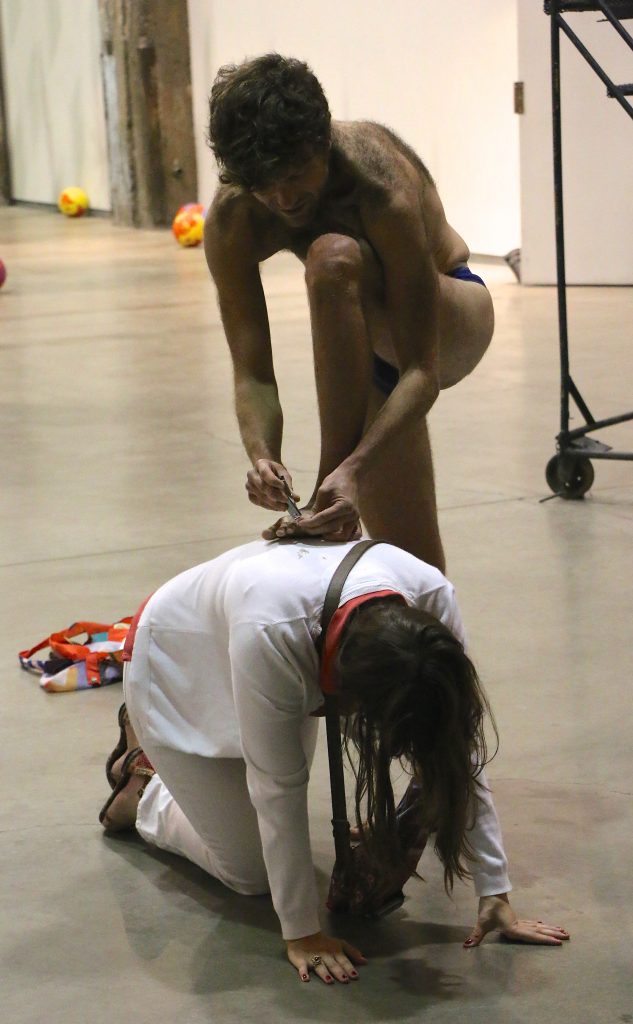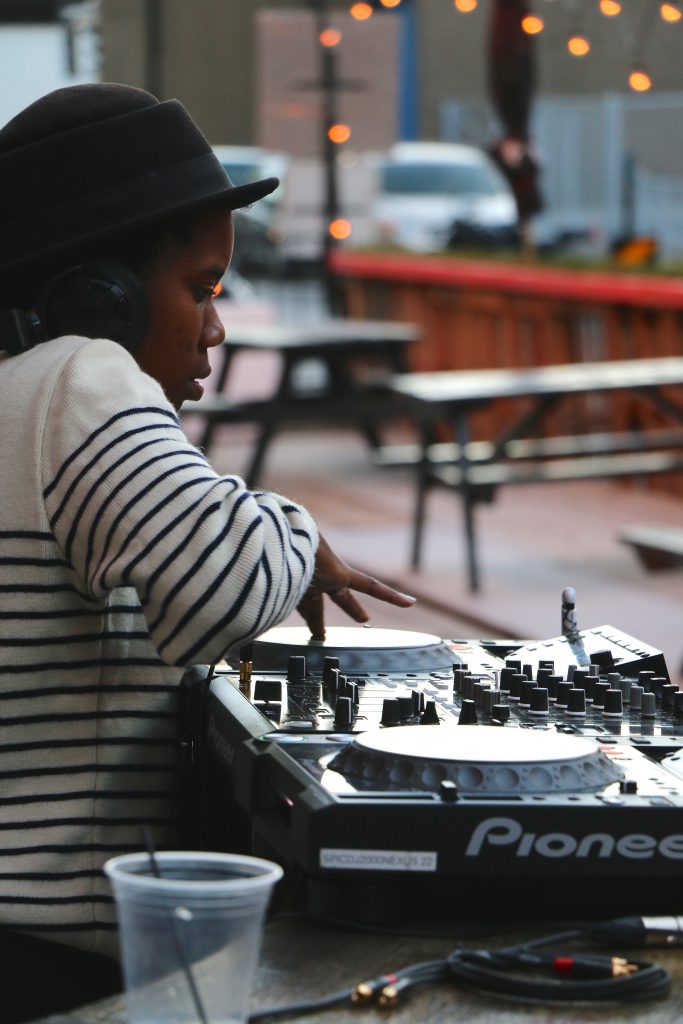An annual fundraiser for the contemporary art space gave guests a taste of their studio display style
On Thursday, Aug. 27, the Darling Foundry celebrated its thirteenth anniversary with their annual fundraising event. What is now a hub for contemporary art in Old-Montréal was previously an industrial building owned by the Darling brothers and used as a part of their metal fabrication company. The foundry was abandoned for 10 years before the Quartier Ephémère moved in to create a visual arts arts centre out of the venue. Some of the buildings that make up the Darling Foundry were built as far back as 1888 and additional buildings were built in the early 1900s. The venue is now refurbished historical architecture, an innovative reutilization of space.

The purpose of this recharged infrastructure, as it is used now, is to “support the creation, the production, and the dissemination of visual arts by emerging artists,” said Caroline Andrieux, founder and artistic director of Quartier Éphémère and the Darling Foundry. “In the studios we want to help emerging artists to build up their careers and to give them trust in what they’re doing.”
More than that, Quartier Ephémère has saved a historical site for the city that would have otherwise been demolished. The building is well-maintained yet still retains a vintage essence, a testament in itself to creativity: an architectural remix.
“For me it’s very important to join the past and the future. I like to be suspended in the middle,” Andrieux explained. “I like this idea that I’m rooted in some very important history and architecture, but I’m looking far away.”
At the beginning of the evening, fundraising guests were escorted into the venue by the sounds of DJ Gayance, as she performed in la Place Publique just outside the building. They were then met with wine and other beverages as servers simultaneously circled the room with delicacies prepared by Hubert Marsolais and Claude Pelletier, two chefs from Le Serpent. The food and drinks were accompanied by musical performances by both Quatuor Boozini and Martin Téreault.
The cocktail portion of the evening was held within the building, where two exhibitions were on display for guests to peruse. In the main gallery, where the welcoming remarks and musical performances took place, Lieven de Boeck’s Let us be us, again and again, and always was on display. The subsequent gallery held Hajra Waheed’s Asylum in the Sea. In addition, guests had the opportunity to explore the studios of the building, where both local and international artists-in-residence had their spaces open for visual consumption.
Seeing the artists is an integral part of the Darling Foundry according to Caroline Andrieux. “While you see work being created you understand more the art that is presented. You know the process of the artist.” In addition, Andrieux hopes that the presentation of studio spaces will break the barrier between audience and artist. To her, artists are mythicized by the proliferated idea that they are a separate, or special, breed of people. Therefore, she hopes the studio tours and the nature of the creator’s environment will allow for a “demystification of ‘the artist.’”

One such artist is Karen Kraven, who works in a studio sponsored by Dale and Nick Tedeschi. “It’s a studio that’s about five times bigger than I’ve ever had or been able to afford,” Kraven said. “That alone makes a big difference, because I make a lot of sculpture and I can work on multiple projects at once.”
Sarah Greig, both a Concordia graduate and current professor in Concordia’s Fine Arts department, has also utilized a studio in the Darling Foundry for about two and a half years. “The major project that I’m working on is an intervention for the Darling,” said Greig. “I’m basically trying to insert into the space to change the dynamic.”
The spaces, for which artists have to apply, provide a platform and environment where they can grow in their craft and produce work with less stress than if they were renting a studio on their own. However, a studio at the Darling Foundry also means constantly having your work open for guests to see.
“It’s independent but at the same time it’s a very public studio space,” said Greig. “You’re always in presentation. You’re always making work and then thinking about how the public is going to see it.”
Even in their mandate the Darling Foundry admits to the inherent difficulties of this style of studio display. However, they also state that “the effect of daily exposure by the public to artists and their works can be profound and poetic.” Greig recognizes this about the venue and makes the best out of the opportunity. “I knew before I came in all the strengths and weaknesses of this place, so I really engaged with the strengths of it.”

The connection between artist and audience in physical space is not the only connection that the Darling Foundry hopes to attain. “We really want people to speak to each other and art is a good way to start the conversation,” said Andrieux. She explained that they want art’s mediating qualities to attract community; they had this in mind when they developed their exterior public space.
Marc-André Casavant finished off the cocktail portion of the evening with a reminder that performance art has an ability to be disconcertingly strange. Nervous laughs echoed through the audience as Casavant did nothing less than undress, clip his toenails on a woman’s back, sing in his underwear, expose his bare ass and take possessions from the audience throughout his piece. Despite that, the audience soon recovered and continued on to float through the venue and enjoy the DJs that performed in la Place Publique for the rest of the evening.
Whether it’s historical architecture that makes you tick, face time with artists, or contemporary art exhibits, the Darling Foundry has more than enough to offer as a venue. Mirador, by Le collectif Acapulco, is set to open on Sept. 24 along with multiple other exhibitions. Surely, it is a space worth exploring in the city—the revamping of antique space and movement towards community connection through artwork is not only enjoyable, it’s admirable.




